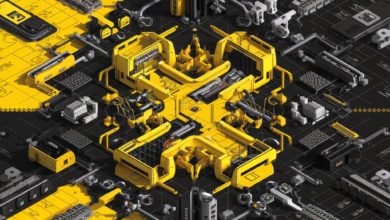Using AI and robotics to accelerate wearable technology

Engineers at the University of Maryland (UMD) have developed a model that combines machine learning and collaborative robotics to overcome challenges in the design of materials used in wearable technology.
The accelerated method to create aerogel materials used in wearable technology could automate design processes for new materials.
Despite their simplistic nature, the aerogel assembly line is complex. Researchers rely on time-intensive experiments and experience-based approaches to explore a vast design space and design the materials.
How robotics and machine learning help overcome the barriers
To overcome these challenges, the research team combined robotics, machine learning algorithms, and materials science expertise to enable the accelerated design of aerogels with programmable mechanical and electrical properties.
Their prediction model is built to generate sustainable products with a 95% accuracy rate.
“Materials science engineers often struggle to adopt machine learning design due to the scarcity of high-quality experimental data,” explained Po-Yen Chen, who led the study.
“Our workflow, which combines robotics and machine learning, not only enhances data quality and collection rates but also assists researchers in navigating the complex design space of wearable technology.”
Accelerating aerogel design in wearable technology
The team’s strong and flexible aerogels were made using conductive titanium nanosheets, as well as naturally occurring components such as cellulose (an organic compound found in plant cells) and gelatine (a collagen-derived protein found in animal tissue and bones).
The team said their tool could also be expanded to meet other applications in aerogel design – such as green technologies used in oil spill clean up, sustainable energy storage, and thermal energy products like insulating windows.
Eleonora Tubaldi, a collaborator of the study, said: “The blending of these approaches is putting us at the frontier of materials design with tailorable complex properties.
“We foresee leveraging this new scaleup production platform to design aerogels with unique mechanical, thermal, and electrical properties for harsh working environments.”



